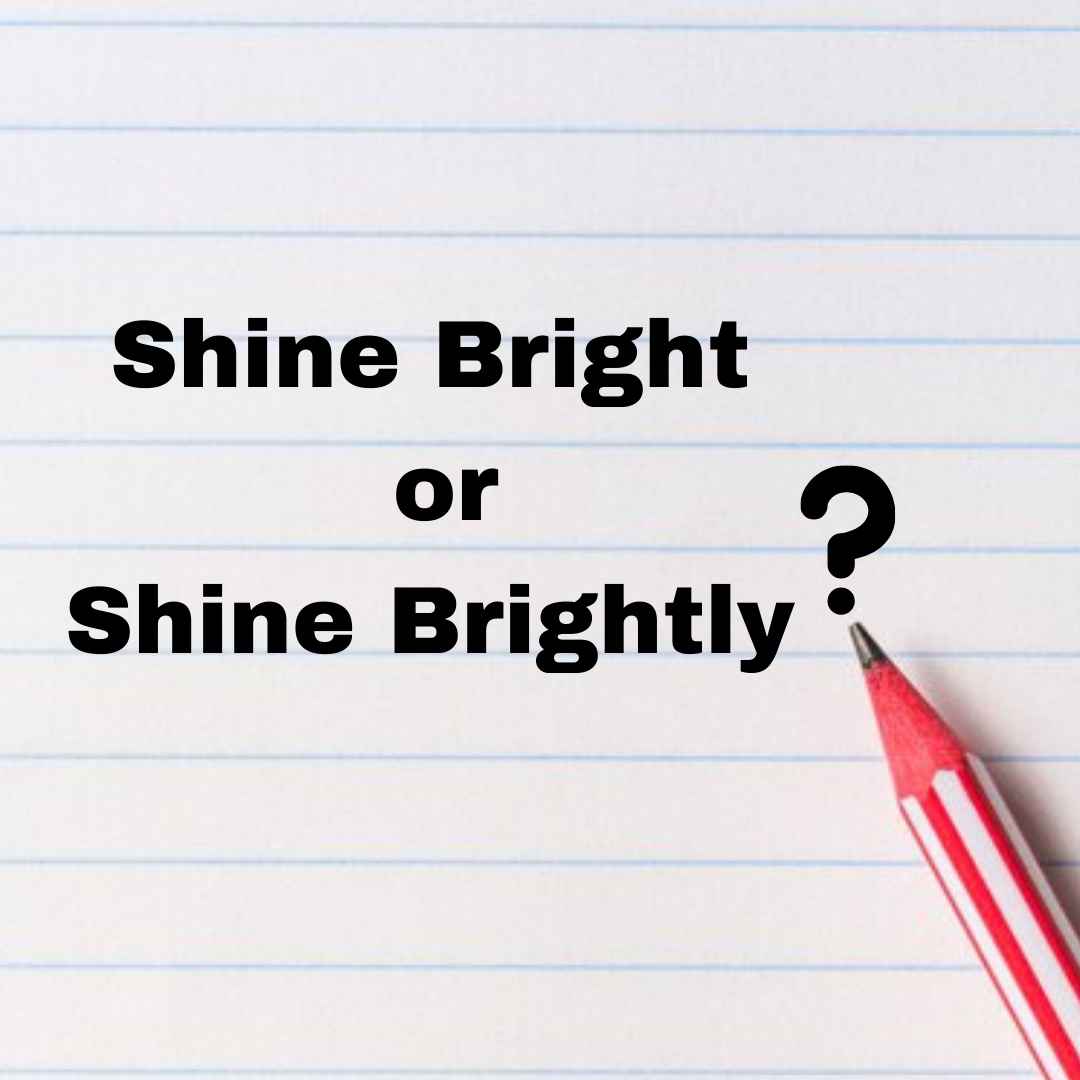Shine Bright or Shine Brightly Difference

Certainly! Let’s break down “shine bright” and “shine brightly” with grammar rules, dictionary definitions, and examples:
Grammar and Dictionary Rules:
- Verb + Adverb:
- This means a word that shows an action (verb) and how it’s done (adverb).
- Example: “Shine” is the action, and “bright” or “brightly” tells how it shines.
Adjective vs. Adverb:
- An adjective describes a noun, like saying something is “red” or “big.”
- An adverb describes a verb, saying how an action is done, like “quickly” or “happily.”
- Example: “Bright” describes a thing (noun), like a “bright light,” while “brightly” tells how something shines (adverb).
Word Order:
- This means how words are placed in a sentence.
- In “shine bright,” “bright” comes after the action word “shine.”
- In “shine brightly,” “brightly” says how the shining happens and goes after “shine.”
Understanding these rules helps us use words like “shine,” “bright,” and “brightly” correctly in sentences.
Dictionary Definitions:
Shine (Verb):
- This means giving off light, like how the sun or a light bulb does.
- Example: When the sun is in the sky, it shines brightly and lights up everything around us.
Bright (Adjective):
- This describes something that gives off a lot of light or has strong colors.
- Example: If something is bright, like a bright yellow dress, it stands out and looks very colorful.
Brightly (Adverb):
- This tells us how something shines or looks when it’s very light or colorful.
- Example: When we look up at the sky at night, and the stars are shining brightly, it means they’re giving off a lot of light, making the sky look clear and beautiful.
By understanding these words, we can talk about how things shine, look colorful, or give off light in different ways.
Read also: Colour Vs Color Simple Guide
Examples with Grammar Rules:
Using “Shine Bright”:
- This means something is shining a lot, like a bright light.
- Example 1: “The stars shine bright in the night sky.” Here, the stars give off a lot of light, making the sky look pretty.
- Example 2: “Her intelligence shines bright among her peers.” This means she’s really smart, and everyone notices it.
Using “Shine Brightly”:
- This is like saying something shines with a lot of light.
- Example 1: “The lighthouse shines brightly to guide ships safely to shore.” This means the lighthouse gives off a lot of light so ships can see it and sail safely.
- Example 2: “His enthusiasm for the project shines brightly through his work.” Here, his excitement and interest in the project are shown in his work.
These examples show how we can use “shine bright” and “shine brightly” to talk about things shining or being really good at something.
Additional Grammar Tips:
Adjective vs. Adverb Forms:
- Adjectives describe nouns (what something is like), while adverbs describe verbs (how something is done).
- Adjectives often end in “-ly” to become adverbs (e.g., quick → quickly).
Placement of Adverbs:
- Adverbs usually go after the main verb, but they can also appear before or after the object.
- Adverbs of frequency (always, often, rarely) usually go before the main verb.
Conclusion:
Understanding the grammar and dictionary rules behind “shine bright” and “shine brightly” helps you use these expressions accurately in your writing and speech. Remember to use “shine bright” when an adjective is needed, and “shine brightly” when describing how something shines with an adverb. Keep practicing to master these idiomatic expressions!